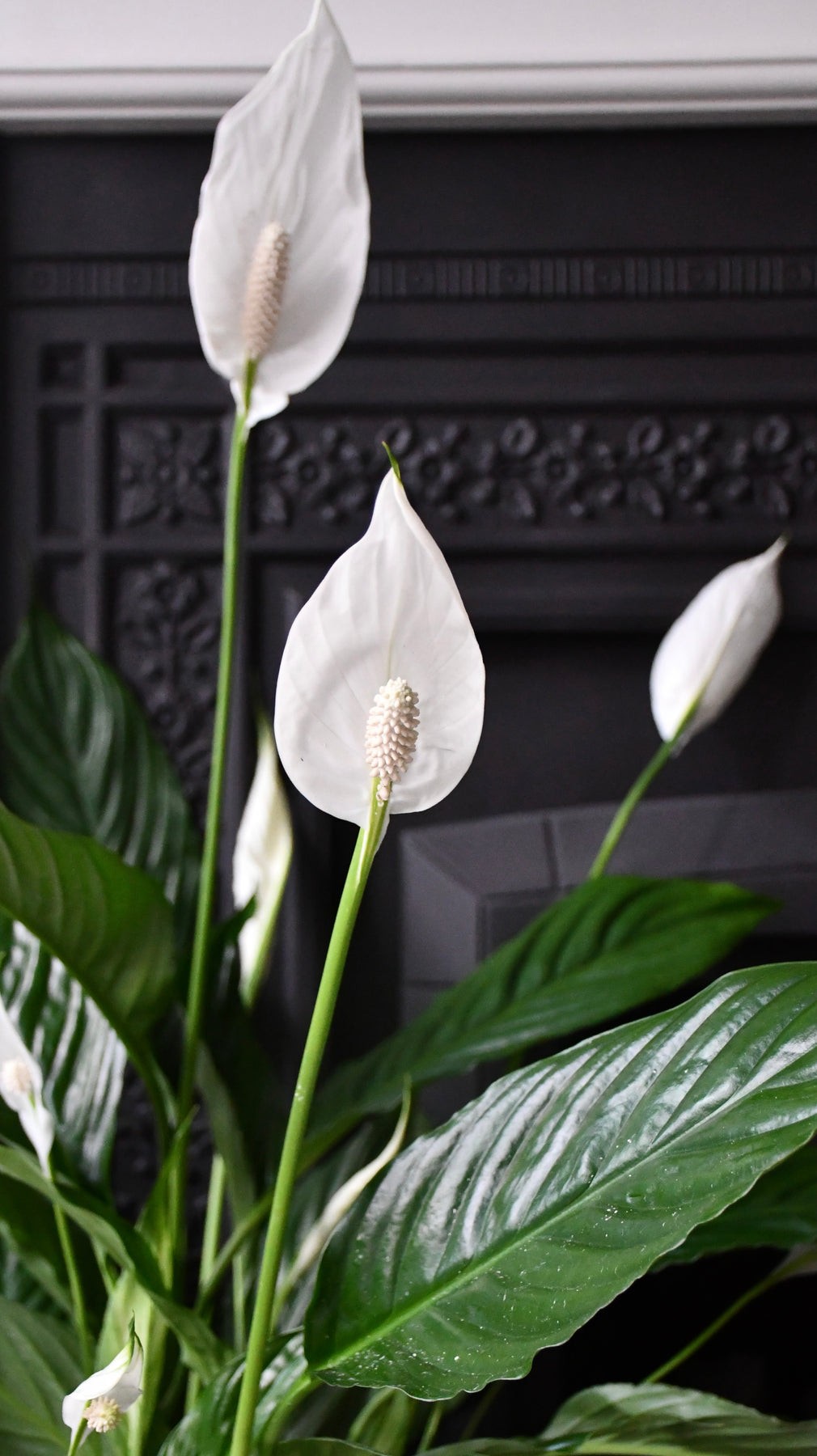Peace lilies (Spathiphyllum) are beloved houseplants, admired for their striking dark green foliage and elegant white flowers. Bringing a touch of tranquility and air-purifying benefits to any indoor space, they are a popular choice for homes and offices alike. However, it can be disheartening to notice your peace lily drooping. If your once vibrant plant is looking a little sad, don’t worry. Drooping leaves are a common issue, and often easily remedied. This guide will explore the primary reasons why your peace lily might be drooping and provide simple solutions to bring it back to its healthy, upright glory.
Common Causes of Drooping Peace Lilies
Drooping in peace lilies is often a sign that the plant is trying to tell you something about its environment or care. Understanding these signals is key to a happy and healthy plant. Here are the most frequent culprits behind a drooping peace lily:
Overwatering: The Silent Killer
One of the most prevalent reasons for a peace lily to droop is ironically related to water – specifically, too much water. While it might seem counterintuitive, overwatering is a common mistake and can be more detrimental than underwatering. Peace lilies prefer their soil to be moist but not consistently soggy. When the soil remains waterlogged, the roots are deprived of oxygen, essentially suffocating them. This root rot prevents the plant from absorbing water and nutrients effectively, leading to drooping leaves as a distress signal.
Solution: The fix for overwatering is to adjust your watering habits and ensure proper drainage.
- Let the soil dry out: Allow the top inch or two of soil to become dry to the touch before watering again. You can check this by gently inserting your finger into the soil.
- Check drainage: Ensure your pot has drainage holes at the bottom. If it doesn’t, consider repotting into a pot that does. Avoid letting your peace lily sit in standing water. After watering, allow any excess water to drain completely away.
Underwatering: The Thirst Trap
On the opposite end of the spectrum, underwatering can also cause your peace lily to droop dramatically. If the plant isn’t receiving enough moisture, it will begin to wilt as its cells lose turgor pressure – the pressure of water inside the plant cells that keeps them rigid and upright. When a peace lily is thirsty, its leaves will lose their firmness and start to sag.
Solution: If underwatering is the issue, the remedy is usually quick and effective.
- Water thoroughly: When the top inch of soil feels dry, it’s time to water. Water deeply until you see water draining from the drainage holes at the bottom of the pot. This ensures that the entire root ball is moistened.
- Observe and adjust: Monitor your peace lily and adjust your watering schedule based on how quickly the soil dries out. Factors like temperature, humidity, and light levels can affect how often your plant needs water.
Incorrect Lighting: Too Much or Too Little Sun
Lighting plays a crucial role in the health of your peace lily. These plants thrive in bright, indirect sunlight, mimicking the dappled light conditions of their native tropical rainforests.
- Too much direct sunlight: Exposing your peace lily to harsh, direct sunlight, especially during the hottest parts of the day, can scorch its delicate leaves and cause them to droop as a protective mechanism.
- Too little light: Conversely, placing your peace lily in a very dark corner or a room with minimal light can also lead to drooping. While peace lilies are known for tolerating lower light conditions, insufficient light can weaken the plant over time, resulting in droopy and lackluster growth.
Solution: Finding the right light balance is essential.
- Bright, indirect light: Position your peace lily in a spot that receives bright, indirect sunlight. An east or north-facing window is often ideal. If you have a south or west-facing window, place the plant a few feet away from the window or use sheer curtains to filter the light.
- Observe leaf color: Monitor the color of the leaves. If they appear pale or yellowish, it might be getting too much light. If the plant is not flowering and growth is very slow, it might need more light.
Low Humidity: Dry Air Woes
Peace lilies are native to tropical environments with high humidity. Indoor environments, especially during winter when heating systems are in use, can be significantly drier than what peace lilies prefer. Low humidity can cause the leaves to lose moisture too quickly, leading to drooping and brown leaf tips.
Solution: Increasing humidity around your peace lily can make a big difference.
- Misting: Regularly misting the leaves with water can temporarily increase humidity.
- Humidity tray: Place a tray filled with pebbles and water near the plant. As the water evaporates, it will increase the humidity in the immediate vicinity. Ensure the pot is not sitting directly in the water.
- Humidifier: Using a room humidifier is the most effective way to raise humidity levels, especially if you have multiple humidity-loving plants.
Potting Issues: Outgrowing the Home
Like all plants, peace lilies can eventually outgrow their pots. When a peace lily becomes root-bound, meaning its roots have filled the entire pot, it can restrict its ability to absorb water and nutrients from the soil. This can lead to stress and, you guessed it, drooping leaves.
Solution: Repotting can revitalize a root-bound peace lily.
- Check for root-bound conditions: Gently remove the plant from its pot to inspect the roots. If the roots are densely packed and circling the pot, it’s time to repot.
- Repot in spring or early summer: The best time to repot is during the plant’s active growing season in spring or early summer. Choose a pot that is only slightly larger than the current one (about 1-2 inches wider in diameter).
- Fresh potting mix: Use a well-draining potting mix suitable for indoor plants.
Pest Infestations: Tiny Troubles
While generally resilient, peace lilies can sometimes be susceptible to pests, such as spider mites, mealybugs, or aphids. These tiny invaders can suck the sap from the leaves, weakening the plant and causing the leaves to droop.
Solution: Regular inspection and prompt action are key to dealing with pests.
- Regularly inspect: Check your peace lily regularly for signs of pests, such as small webs (spider mites), cottony white masses (mealybugs), or clusters of small insects (aphids).
- Treat infestations promptly: If you spot pests, isolate the plant to prevent them from spreading to other houseplants. Treat the infestation with insecticidal soap or neem oil, following the product instructions carefully.
Reviving Your Drooping Peace Lily: A Step-by-Step Approach
Seeing your peace lily droop can be concerning, but often, addressing the underlying cause can lead to a quick recovery. Here’s a step-by-step approach to revive your plant:
- Assess the soil moisture: Check if the soil is too wet or too dry. Adjust your watering accordingly.
- Evaluate lighting conditions: Ensure your peace lily is in bright, indirect light and not exposed to direct sun.
- Consider humidity: If the air is dry, increase humidity around the plant.
- Check for pests: Inspect the plant for any signs of infestation.
- Rule out pot size: If the plant has been in the same pot for a long time, consider if it might be root-bound.
By systematically addressing these potential issues, you can often pinpoint the reason why your peace lily is drooping and take the necessary steps to restore its health and vibrancy. Peace lilies are generally forgiving plants, and with a little attention and care, your drooping peace lily can bounce back and continue to enhance your home with its beauty and air-purifying qualities. Happy growing!

